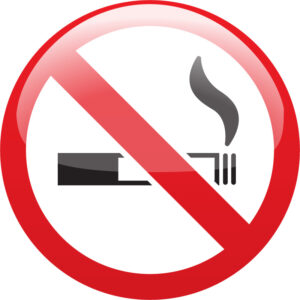Nazi-looted Art Returned
In the years leading up to and during World War II, members of the Nazi party looted the homes of Jewish families sent to concentration camps. They stole millions of items, including valuables like silver, china, books, religious treasures, and art. It was been over sixty years since the end of that war, and items are still being returned to the surviving families of the rightful owners. Recently, seven valuable paintings, including four that were hanging in Paris’ Louvre art museum, were returned to the family of Richard Neumann. Neumann was a Jewish man from Austria who had sold off his collection for a fraction of its value in order to flee occupied France. The paintings will go to Neumann’s grandson, 82, who lives in the United States.
Historians say that Aldolf Hitler, the World War II dictator of Nazi Germany, was an unsuccessful artist, having been rejected from the Vienna Academy of Fine Arts. However, he went on to consider himself an art connoisseur, and used the money and influence of the Nazi party to acquire artwork, eventually stealing items outright. After the war ended, organizations like the Monuments, Fine Arts and Archives (MFFA) section were created to help recover items. While it has been successful in returning thousands of pieces of art, there are still many more that remain unclaimed.
Dig Deeper–Research more on this topic and find five valuable paintings that were once looted by the Nazi’s that have been recovered. Note where and how the pieces were found, their current estimated value, and to whom they were returned.
Smoking Bans Make for a Healthier World

Smoking bans are not new. Such public health policies date back as early as the 1500s. However, around the world in recent decades there has been a considerable rise in legislation restricting and prohibiting smoking in public areas. There is now documented evidence to prove these bans have protected the health of others especially children.
In Scotland, significantly fewer children have been admitted to hospitals for asthma-related illness. A recent study out of Belgium has showed drops in the number of prematurely-born babies. It is a well-documented fact that smoking during pregnancy leads to reduced birth weight. Hospitals in Pueblo, Colorado saw 27% fewer heart attack patients eighteen months after a smoking ban was put into effect. Conversely, neighboring towns with no such ban saw no such change.
The original rationale behind such bans was to protect non-smokers from the effects of second-hand smoke. However, studies suggest that these bans have reduced the amount of cigarettes consumed by regular smokers. Minnesota was the first state to restrict smoking in public spaces, requiring separate smoking and non-smoking sections. Many cities followed suit, increasing the level of restriction. The South Asian country of Bhutan is currently the only country to ban the production, sale, and consumption of tobacco products.
What Do You Think? What are the smoking laws where you live? If you don’t know, look them up. Do you think they are fair? Why or why not?
Penniless Canada
On February 10, the Royal Canadian Mint officially ended production of the Canadian penny. For many years, lawmakers have debated the pros and cons of this issue. A 2007 survey suggested that Canadians were hoarding the coins, essentially removing them from circulation. Then there was the fact that the cost of producing a penny had finally exceeded the actual value of the coin. The main reason for the increase in production was the rising cost of zinc, which had become the main ingredient in the one-cent piece in later years.
While the production of future pennies will cease, Canada’s penny will remain legal tender. It will now be up to individual businesses whether or not they will accept them, or simply raise prices to the nearest nickel. Any left over pennies at the Mint (or those turned into the Mint) will be sent to a foundry. There collected pennies will be melted down and the resulting metal recycled. As a way to honor the penny’s place in Canadian culture, the Bank of Canada’s Currency Museum is creating a mural made up of nearly 16,000 of them.
What Do You Think? Now that the Canadians have been successful in abolishing their penny, do you think the United States will do the same? Why or why not? Look up arguments for and against this issue and determine how likely it is to happen.
Eurozone Recession Worsens
The last three months of 2012 were not good ones for the cluster of seventeen countries that make up the Eurozone. It was the first year that produced no growth since this union of countries that share the euro was adopted in 1998. Even though there were two countries that individually showed growth (Estonia and Slovakia), it is the larger economies that make the significant difference; Ireland, Greece, France, Spain and even typically stable Germany reported drops in the last quarter.
As a whole, the Eurozone economy shrank by 0.5 percent, in contrast to recent growth experienced in Japan (1.9 percent) and the United States (2.2 percent). The European Central Bank has pledged to do whatever it takes to save the euro. Economic experts expect that Germany will recover quickly, which will help stabilize the rest of the region. In Greece and Spain, two larger countries that are suffering from massive debt, lawmakers are cutting spending and raising taxes as a way to ease this burden.
